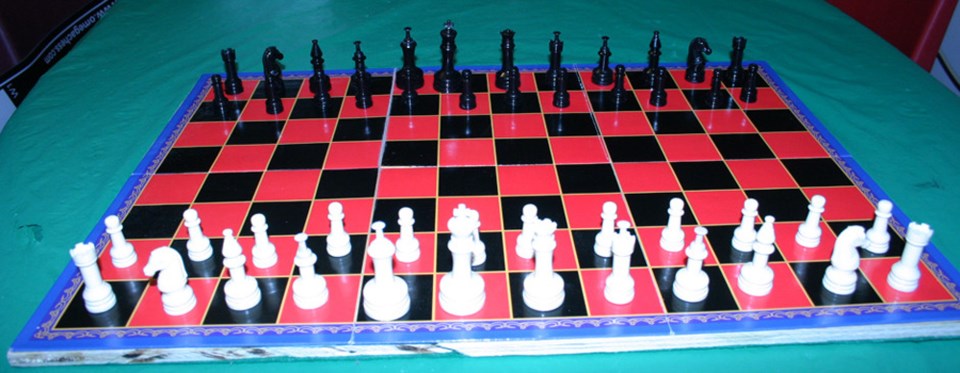After last week’s look at the modern interpretation of Petteia I was left thinking about the relative rarity of games played on a 12x8 checkerboard.
The games using such an expansive board are quite limited.
Besides Petteia, another which came to my mind was Courier Chess, a somewhat obscure old variant of chess, which frankly holds some intrigue even in our modern times.
“Courier chess was an extraordinarily long lived chess variant, spanning some 600 years, and bridging the transition between the medieval chess brought in from Arabia and the modern chess we still play today. But accounts of courier chess are few and scattered across the centuries,” notes www.courierchess.com
The website is actually a rather rich source of information on the old variant, including a rather interesting chronological time frame for the game which included;
• About 500 A.D. chess begins somewhere in Asia
• 822 Chess first enters Europe, through Spain.
• 1202 Wirnt von Gravenberg mentions courier chess in his Arthurian romance,Wigalois.
• 1300 Heinrich von Beringen mentions the courier game as an improvement on chess, in his great chess poem, Schachbuch.
• 1337 Kunrat von Ammenhausen describes a detailed account of courier chess in Constance (at the south-west corner of Germany, bordering Switzerland).
• 1508 Lucas van Leyden, at 14 years old, paints his famous portrayal of courier chess, which later finds its way to the Royal Museum of Berlin.
• 1616 Gustav Selenus witnesses courier chess in Ströbeck, Germany. He describes the rules of play in his Das Schack- oder König-Spiel (“Chess- or King-Game”). He also provides a sketch of elaborate figurative pieces (below).
• 1651 On May 13th, The village of Ströbeck, Germany is presented with a courier chess board and silver courier chess pieces by the Elector-Prince Frederick William of Brandenburg. The board remains in Ströbeck; the silver pieces are long gone.
• 1661 Jan de Braÿ, classic Dutch Artist in Haarlem, Netherlands, sketches a young man (possibly a self-portrait), sitting with chessmen strewn on a courier chess board (top of this page). Certain pieces, especially the pawns, show a strong resemblance to the pieces in van Leyden’s painting of 1508.
1817 A man by the name of Langenstraß leaves a courier chess board in Ströbeck, Germany. It remains on display today at the Ströbeck chess museum.
• 1821 H. G. Albers from Lüneburg writes that courier chess is played in the Ströbeck area.
It would be only a few years later Courier Chess seems to drop out of favour, and was seldom played if not basically forgotten.
It would be near two centuries before Courier Chess would gain much more than a footnote in the history of chess.
It was in 2009 an article appeared in The Chess Collector — the official magazine of Chess Collector International, discussing courier chess in detail, and referring to a new re-creation of the game.
So what sets Courier Chess apart, besides the larger board?
Well each player has 24 pieces, 12 pawns and an expanded back row array which includes “three novel pieces: the sage, moving just like the king (but able to be captured), the jester, moving one square forward, back or sideways (a complement of the queen’s one-step-diagonal move), two couriers, moving any number of unencumbered squares diagonally,” detailed the Chess Collector article.
So the overall array is:
Rook – like our modern rook
Knight – like our modern knight
Bishop – the medieval bishop – moved only two spaces diagonally
Courier – the ‘novel’ piece in Courier chess, moved like our modern bishop
Sage – moved just like the modern king, but could be captured in play
King – like our modern king
Queen – the medieval queen – moved only one space diagonally
Jester – moved only one space forward, backward, left or right.
Pawn – like our modern pawn but only one space at a time – no double jump
The mixed movements of the pieces, long ranging rooks and courier versus the short moves of sage and jester, makes for a different play style than the modern game.
Add the large board, the width creating a need to attack and defend in decidedly different wants, and Courier Chess is worth giving a try.
The board you hopefully made for Petteia of course works with Courier Chess. The alternate pieces will need to be drawn from different chess sets, but it’s worth the effort.
The old variant is one worth exploring, so give this one a try.



